




History
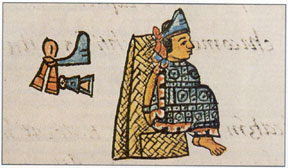 There have been 52 transits of Venus across the Sun between 2000 B.C and 1882 A.D. Humans could only have noticed this event if they
were watching the sun near the horizon at exactly the right time.
There have been 52 transits of Venus across the Sun between 2000 B.C and 1882 A.D. Humans could only have noticed this event if they
were watching the sun near the horizon at exactly the right time.
There are no historical records that suggest anyone was so lucky prior to 1639, although Montezuma may have spotted the 1520 transit while studying the Sun for portends.
The Mayan civilization had a particular fascination with Venus because it was associated with their chief god Quetzalcoatl and one of his incarnations, Kulkulkan.
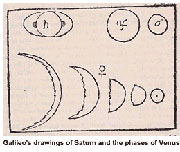


Galileo Galilee in 1610 was the first human to actually see Venus as more than just a bright point of light in the sky. Johannes Kepler,
meanwhile, was shaking up the world by his meticulous use of astronomical data assembled by Tycho Brahe. What he discovered during
these laborious hand calculations was that Venus would pass in front of the Sun on December 6th 1631, but the transit was not visible from
Europe at all.
There is no known sighting of this transit in recorded history until the British Cleric, Jeremiah Horrocks and his friend William
Crabtree spotted it on December 4, 1639, and that is only because Horrocks had mathematically predicted this transit using better data
than Kepler had used. Here is what Horrocks had to say about the transit.
"Anxiously intent therefore on the undertaking through the greater part of the 23rd, and the whole of the 24th, I omitted no available opportunity of observing her ingress.
I watched carefully on the 24th from sunrise to nine o'clock, and from a little before ten until noon, and at one in the afternoon, being called away in the intervals by
business of the highest importance, which, for these ornamental pursuits I could not with propriety neglect. But during all this time I saw nothing in the sun except a small
and common spot, consisting as it were of three points at a distance from the center towards the left, which I noticed on the preceding and following days. This evidently
had nothing to do with Venus. About fifteen minutes past three in the afternoon, when I was again at liberty to continue my labors, the clouds, as if by divine interposition,
were entirely dispersed, and I was once more invited to the grateful task of repeating my observations. I then beheld a most agreeable spectacle, the object of my sanguine
wishes, a spot of unusual magnitude and of a perfectly circular shape, which had already fully entered upon the sun's disc on the left, so that the limbs of the Sun and
Venus precisely coincided, forming an angle of contact. Not doubting that this was really the shadow of the planet, I immediately applied
myself sedulously to observe it"
[Jeremiah Horrocks]
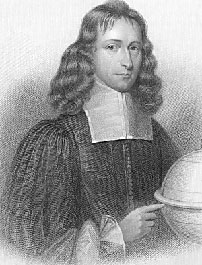



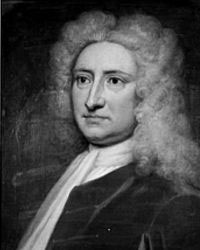 Although the transit of Venus is certainly a rare event in the
heavens, why would a scientist be interested in it? It all had
to do with something as simple as the size of the solar
system. When you make a scale model of the solar system
with its nine planets, how do you know that in this model, the
actual distance from Sun to Earth is 93 million miles and not,
say, 153 million or 23 million? The answer is that you have to
come up with a way to actually measure this distance.
Although the transit of Venus is certainly a rare event in the
heavens, why would a scientist be interested in it? It all had
to do with something as simple as the size of the solar
system. When you make a scale model of the solar system
with its nine planets, how do you know that in this model, the
actual distance from Sun to Earth is 93 million miles and not,
say, 153 million or 23 million? The answer is that you have to
come up with a way to actually measure this distance.
In 1663, Rev. James Gregory (1638 - 1675) who was considered one of the most important mathematicians of the 17th century suggested that a more accurate measurement of the Earth-Sun distance could be made using the transit of Venus. (See picture top left)
Sir Edmund Halley (1656-1742), the namesake for Halley's Comet, made the same suggestion 14 years later in 1677 and published an important paper on the details of this technique in 1716. In science, it is not always 'being first' or 'being correct' that gets you into the history books.
Although the Sun-Earth distance did get refined enormously during the transits of 1761, 1769, 1874 and 1882, transit measurements turned out to be harder to perfect than scientists had anticipated. But the focus on Venus at this crucial moment led to another, even more exciting discovery.
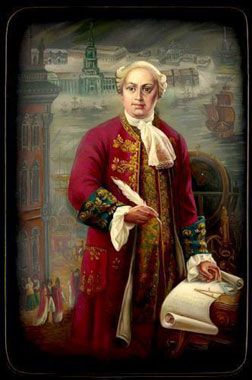
During the transit of
June 5, 1761, which
was observed by 176
scientists from 117
stations all over the
world, the Russian
astronomer Mikhail V.
Lomonosov
(1711-1765)
discovered a very
strange thing. Instead
of the very black disk
of Venus sliding into
the Sun's bright edge,
it actually grew a
beautiful halo of light
all around its dark
edge. The halo lasted only a few
minutes and then
vanished. With great
insight, Lomonosov figured out
that this is exactly
what you would
expect to see if Venus
had an atmosphere!
His drawings below
show some of the
details that he noted
about the edge of
Venus near the Sun.
Hundreds of photographs were taken of the next transit on December 8, 1874. This was the first use of the new technology.
Few photographic plates turned out to be scientifically useful, and only a few were actually preserved for us to look at
today. Eight American expeditions were organized by the Transit of Venus Commission, with astronomer Simon
Newcomb as Secretary. The U. S. Congress set aside funds totaling an astounding $177,000 for the expeditions. Over $1
million were expended internationally.
The transit was still, largely, a scientific curiosity, but for the first time we begin to see more curiosity about this phenomenon in the newspaper accounts.
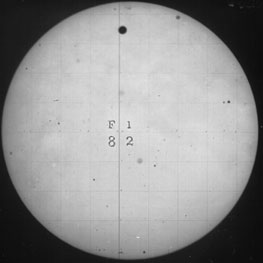 This lack of news-worthiness all but vanished for the next
transit. There was enormous public interest in the next transit
on December 6, 1882. It made the front pages of every
national and international newspaper, with lavish full-length
articles covering several pages. Was the public now
intrigued by this event? It would seem so! Newspaper
accounts give us lots of details.
This lack of news-worthiness all but vanished for the next
transit. There was enormous public interest in the next transit
on December 6, 1882. It made the front pages of every
national and international newspaper, with lavish full-length
articles covering several pages. Was the public now
intrigued by this event? It would seem so! Newspaper
accounts give us lots of details.
"Many of the residents of San Francisco were noticed yesterday with a piece of smoked glass to their eye, looking curiously at the sun, between the hours of about sunrise and noon, during which time Venus was visible; and even under these disadvantages without the aid of a suitable telescope, it was still a grand and beautiful spectacle. All who missed a view of the transit of Venus are to be commiserated, for should they live to be 100 years old the chance will not come again occur." (San Francisco Chronicle)
During the 1882 transit, direct timing of the transit was all but abandoned, and thousands
of photographs were taken instead - with
better calibration techniques. In the end, it took nearly ten years for the
thousands of photographs to be properly measured, and their
data pushed through complex mathematical calculations.
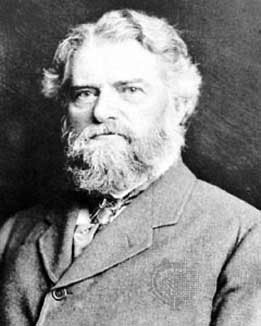
There was a huge amount of data to sift through in order to calculate the Earth-Sun distance, and there were only a few astronomers
that the international community trusted to carry out the complex calculations. The two most noteworthy individuals were Simon
Newcomb (left)and William Harkness. (right).
- Simon Newcomb, who was in charge of the U.S. Venus Transit Commission, published his best estimate of the solar parallax angle in 1891, based on all of the assembled data from several transits, he deduced a value of 8.80 +/- 0.051" for the parallax angle, and a distance from Earth to Sun of 92,702,000 +/- 53,700 miles.
- William Harkness, the Director of the U.S. Naval Observatory, deduced a slightly larger value for the parallax angle of 8.809" +/- 0.0059", which translates to a distance of 92,797,000 +/- 59,700 miles. His result, however, was never formally published in the professional journals.
In the end, Newcomb's value, and not the one by Harkness, was adopted in 1896 by the international scientific community. The difference between the two answers was a statistically insignificant 95,000 miles!
Of course today, most textbooks report the Astronomical Unit (or AU) as '93 million miles'. Yet, Harkness may have had the 'final word' on this transit in other ways than in the details of its measurement.
One of the loveliest comments made by a scientist during this time was when Harkness noted in 1882 that the next transit of Venus will occur, "when the June flowers are blooming in 2004,". The longer version of this quote reads:
"We are now on the eve of the second transit of a pair, after which there will be no other till the twenty-first century of our era has dawned upon the earth, and the June flowers are blooming in 2004. When the last transit season occurred the intellectual world was awakening from the slumber of ages, and that wondrous scientific activity which has led to our present advanced knowledge was just beginning. What will be the state of science when the next transit season arrives God only knows. Not even our children's children will live to take part in the astronomy of that day. As for ourselves, we have to do with the present ..."
A similar comment was made by the Astronomer Royal of Ireland, Robert Stawell Ball (1840-1913) in his 1885 book 'The Story of the Heavens'. He gave over 700 popular lectures on astronomy, and was in great demand in Ireland and Britain. An excerpt from this book, which was published three years after Harkness's lecture and the above quotes, reads:
"While steadily looking at the exquisitely beautiful sight of the gradual advance of the planet, I became aware that there were other objects besides Venus between me
and the sun. They were the snowflakes, which again began to fall rapidly. I must admit the phenomenon was singularly beautiful. The telescopic effect of a snowstorm
with the sun as a background I had never before seen. It reminded me of the golden rain which is sometimes seen falling from a flight of sky-rockets during pyrotechnic
displays; but I would gladly have dispensed with the spectacle, for it necessarily followed that the sun and Venus again disappeared from view. Still, to have seen even a
part of a transit of Venus is an event to remember for a lifetime, and we felt more delight than can be easily expressed at even this slight gleam of success. The clouds at
length dispersed, and this time Venus had so completely entered on the sun that the distance from the edge of the planet to the edge of the sun was about twice the
diameter of the planet.
We succeeded in obtaining sixteen measures altogether, but the sun was now getting low, the clouds again to interfere, and we saw the pursuit of the transit must be left
to the thousands of astronomers in happier climes who had been eagerly awaiting it. But before the phenomenon had ceased, I spared a few minutes from the
somewhat mechanical work at the micrometer to take a view of the transit in the more picturesque form which the large field of the finder presents. The sun was already
beginning to put on the ruddy hues of sunset, and there, far in on its face, was the sharp, round, black disk of Venus. It was then easy to sympathize with the supreme
joy of Horrocks, when, in 1639, he for the first time witnessed this spectacle. The intrinsic interest of the phenomenon, its rarity, the fulfillment of the prediction, the
noble problem which the transit of Venus helps us to solve, are all present to our thoughts when we look at this pleasing picture, a repetition of which will not occur
again until the flowers are blooming in the June of A. D. 2004."
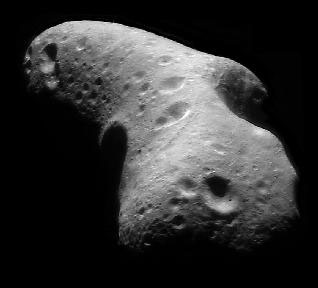
In 1931, parallax observations of the close approach of the asteroid Eros by British astronomer Harold Spencer Jones offered an even more precise value for the 'Astronomical Unit' of 92,596,000.
Once astronomers began bouncing radar signals off Venus in the 1960's, even more precise values could be derived from the travel time of the reflected radar pulses. The current super-precise value for the Astronomical Unit stands at 149,597,892.3 kilometers (92,955,820.3 miles) with an uncertainty of 1.5 kilometers.
The earlier discovery of the atmosphere of Venus by Lomonosov inspired astronomers during the 1874 and 1882 transits to use a new technology called spectroscopy to detect the elements in the atmosphere. But all they could conclude, and wrongly, was that there seemed to be a lot of water in the atmosphere.
Then in 1934, astronomers Walter Adams and Theodore Dunham used even more refined spectroscopic instruments to finally detect a gaseous component to the atmosphere. It wasn't nitrogen, oxygen or any other simple gas, instead it was carbon dioxide. Lots of it! In fact so far as they could tell, carbon dioxide was the only constituent of the atmosphere.
Decades later, astronomers also discovered traces of sulfuric acid, and went on to make the first measurement of the surface temperature of Venus. It was hardly a moist, tropical and humid planet like some science fiction stories had claimed. Instead, its surface was at a sizzling temperature of over 800 Fahrenheit with an atmosphere thick enough to crush any human or machine not properly protected.
For answers to your questions about the Transit of Venus, visit Ask the Space Scientist at http://image.gsfc.nasa.gov/poetry/venus/TransitFAQs.html
For additional historical information about the transit of Venus, please visit the Smithsonian Institution's Dibner Library 'Chasing Venus' exhibit which debuts on March 23, 2004 in Washington, DC. Their resources, including a substantial archive of historical documents, will appear online at the Chasing Venus.
|
Responsible NASA Official:
Dr. James Thiemann
|